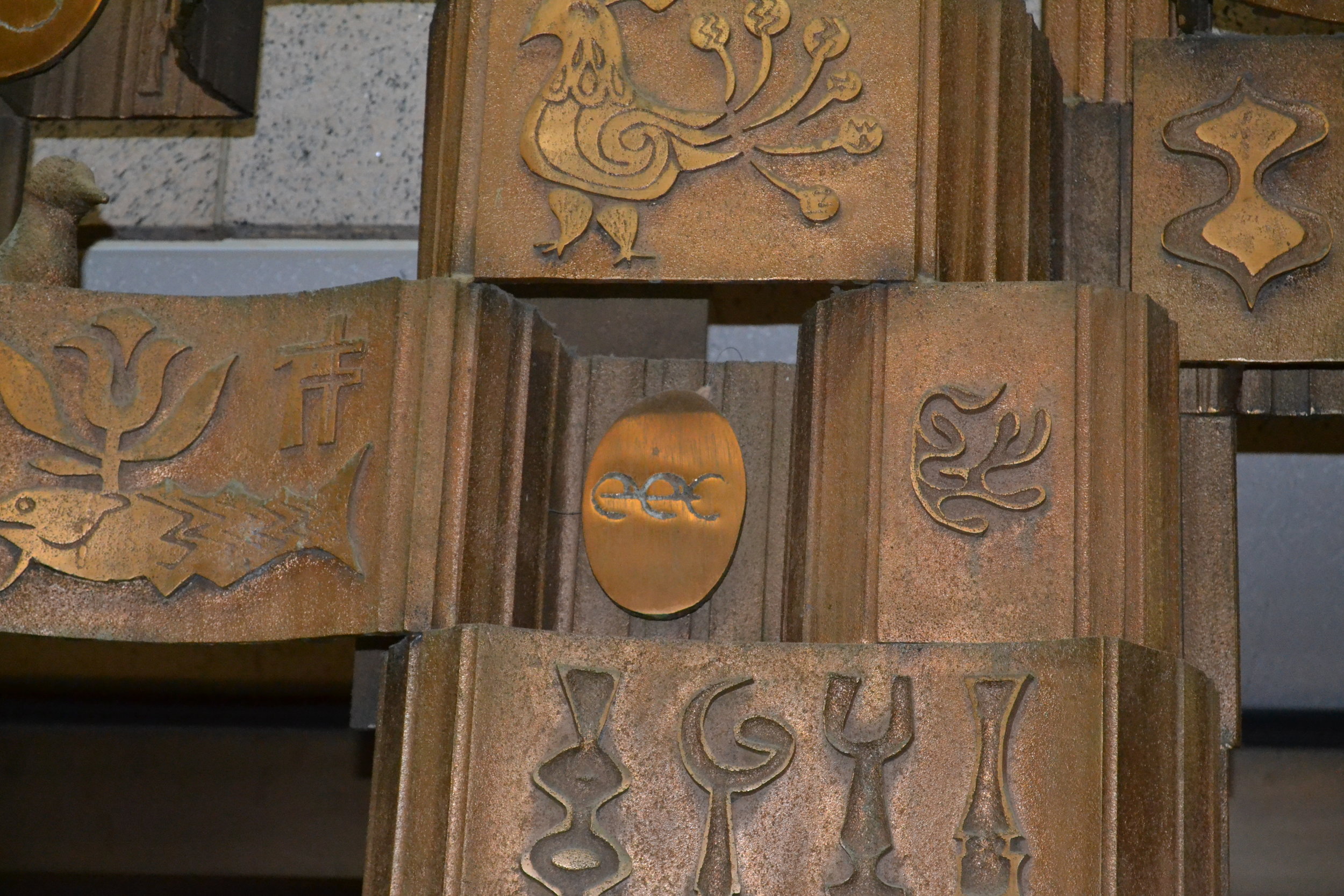public art recognizes poets
by Ken Bresler
A sculpture that people often overlook and rush by, despite its prominent location, recognizes poets’ contributions to Massachusetts by including the initials of nine poets.
The sculpture is The Massachusetts Artifact in the lobby of One Ashburton Place, the second most important state office building after – and across the street from – the State House.
Although the sculpture by Alfred M. Duca was installed in 1975, a detailed explanation of it did not appear until Fall 2017. The Massachusetts Artifact, a bronze screen approximately 25 feet high and 27 feet wide, contains the initials of Massachusetts luminaries inscribed on bronze oval plaques, various cities and town seals, and, well, artifacts that represent aspects of Bay State history.
Duca explained the significance of the The Massachusetts Artifact in handwritten notes that are now in the Smithsonian Institution’s Archives of American Art in Washington, D.C. Duca’s papers reveal that the Commonwealth of Massachusetts considered publishing a booklet about his art work, but it never did. I flew to Washington, D.C. to review his papers. Then I wrote extensively about The Massachusetts Artifact, the first in-depth discussion, in my recent book Poetry Made Visible: Boston Sites for Poetry Lovers, Art Lovers & Lovers.
The sculpture arrays artifacts in 22 rows. In his notes, Duca started with Row A at the bottom and proceeded to Row U at the top.
The Massachusetts Artifact commemorates 93 or so people. (An exact count is hard because it is unclear whether the sculpture commemorates two people.) A tenth of them – nine people – were poets.
Name these Massachusetts poets commemorated by their initials:
Row B: OWH.
Row D: ED.
Row I: eec.
Row O: JWH, HWL.
Row R: EAP, HDT, RWE.
Row S: NH.
The answers are below.
Ken Bresler is an occasional poet and the author of Poetry Made Visible: Boston Sites for Poetry Lovers, Art Lovers & Lovers.
Answers: Oliver Wendell Holmes, Emily Dickinson, E.E. Cummings, Julia Ward Howe, Henry Wadsworth Longfellow, Edgar Allan Poe (who was born in Boston, but probably didn’t consider himself a Bay Stater), Henry David Thoreau, Ralph Waldo Emerson, and Nathaniel Hawthorne.

